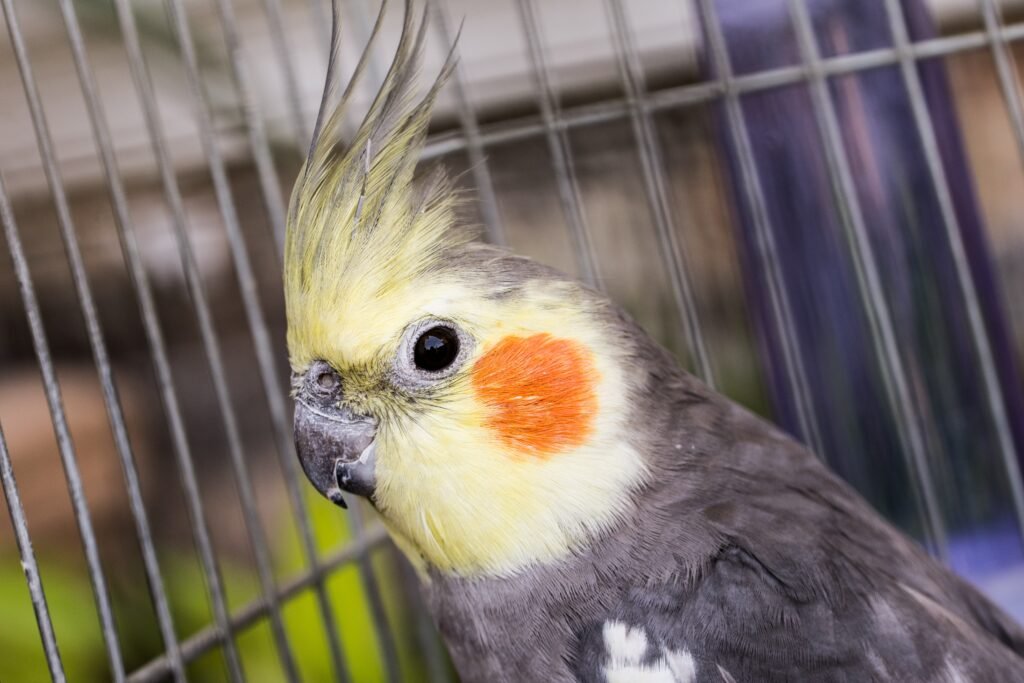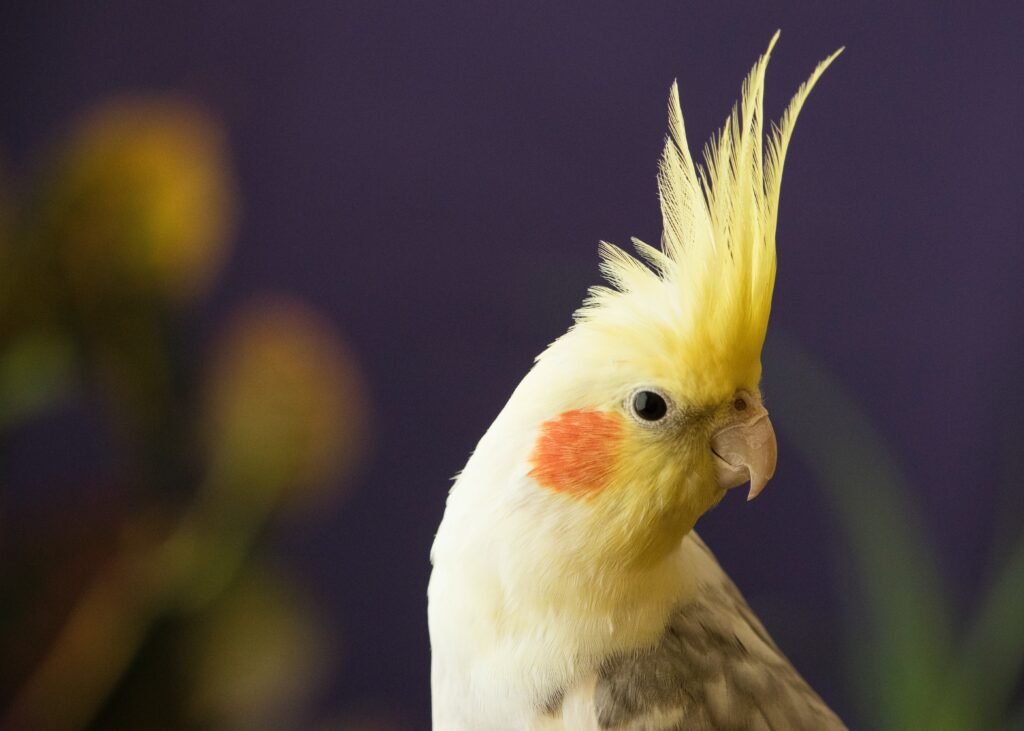
With their vibrant feathers and charming personalities, Cockatiels are popular pet birds worldwide. Like all birds, cockatiels undergo a natural process called molting, where they shed and replace their feathers. Understanding the molting process is crucial for every cockatiel owner to ensure their pet’s health and well-being. In this complete guide, we will delve into the intricacies of the molting process in cockatiels, offering valuable insights and tips along the way.
What is Molting?
Molting is a natural process in birds that involves shedding and replacing old feathers with new ones. It is essential for maintaining a bird’s plumage and vital in flight, insulation, and courtship display. Cockatiels generally undergo their first molt around 6 to 9 months of age and then experience molting cycles throughout their lives, typically once or twice a year.
During molting, cockatiels go through three distinct phases:
- Pre-Molt Phase
The pre-molt phase lasts for a few weeks and is characterized by noticeable behavior and physical appearance changes. Some common signs of pre-molt include:
- Increased appetite: Cockatiels require additional nutrients to support feather growth and development during this phase. Providing a balanced and nutritious diet is crucial.
- Restlessness and agitation: Your bird may exhibit increased activity levels and restlessness due to hormonal changes and discomfort caused by feather loss.
- Scratching or excessive preening: Cockatiels may engage in excessive preening to remove old feathers and stimulate the growth of new ones. However, be cautious of over-preening, as it can damage feathers.
- Loss of feathers around the head, neck, and wings: Feather loss is a natural part of the molting process. You may notice patches of bare skin as old feathers fall out and new ones start to grow.
It’s important to note that the pre-molt phase can vary in duration depending on various factors, such as the bird’s age, health, and environmental conditions. Providing a calm and stress-free environment during this phase is essential to support your bird’s well-being.
- Molt Phase
The molt phase is the shedding of old feathers and the growth of new ones. Depending on the individual cockatiel, this phase can last anywhere from a few weeks to several months. During this phase, you may observe the following:
- Increased feather loss: As old feathers are shed, you may notice an increase in the number of feathers found in your bird’s cage or surrounding areas. This is a natural part of the molting process.
- Presence of pin feathers (newly forming feathers): Pin feathers are the early stages of new feather growth. They appear as small, cylindrical structures covered in a waxy sheath. Avoid touching or disturbing these delicate structures, as they can be sensitive and cause discomfort to your bird.
- Changes in feather coloration and pattern: New feathers may have slightly different colors than the old ones. This is normal and adds to the unique beauty of each cockatiel.
- Temporary bald spots: As old feathers fall out and new ones grow, your cockatiel may have temporary bald spots. New feathers will cover these areas once they fully develop.
Cockatiels may experience some discomfort during the molting phase, leading to changes in their behavior, such as increased vocalization, irritability, or decreased activity levels. Providing a calm and stress-free environment during this phase is crucial to support your bird’s well-being.
- Post-Molt Phase
As the molt phase nears its end, cockatiels enter the post-molt phase. Completing feather growth characterizes this phase, the return of normal coloration, and the restoration of healthy plumage. Your cockatiel may regain its usual energy levels and behavior during this phase.
Supporting Your Cockatiel During Molting
Molting can be a physically demanding process for cockatiels, and as a responsible owner, you can take certain steps to ease their discomfort and support their health:

- Balanced Diet
Providing a balanced and nutritious diet is crucial during molting. Ensure that your cockatiel’s diet includes a variety of fresh fruits, vegetables, high-quality seeds, and pellets. Additionally, consider incorporating protein-rich foods, such as cooked eggs or legumes, to support feather growth. A well-rounded diet will provide the necessary nutrients for healthy feather development.
- Grooming Support
During molting, your cockatiel may require extra help with grooming due to the presence of pin feathers and potential discomfort. Gently assist your bird by offering occasional baths or misting sessions, which can alleviate itching and help remove dry skin and residue. Be careful not to spray water directly on the pin feathers to avoid damaging them. Additionally, bathing your cockatiel with a shallow water dish can help maintain good feather condition.
- Environmental Considerations
Maintaining a comfortable and stress-free environment is essential for your cockatiel during molting. Ensure the temperature and humidity levels are appropriate, as extreme changes can affect feather growth. Cockatiels thrive in temperatures between 70 to 80 degrees Fahrenheit (21 to 27 degrees Celsius) with a relative humidity of around 50%. Proper lighting, ventilation, and a clean living space will improve your bird’s well-being.
Additionally, provide plenty of perches and toys to keep your bird mentally stimulated and prevent excessive preening. Cockatiels are curious and active birds, so offering a variety of toys, including chewable toys and puzzle toys, will keep them engaged and prevent boredom.
- Regular Vet Check-ups
Molting can sometimes make cockatiels more susceptible to health issues. Regular vet check-ups are crucial to monitor your bird’s overall health and address any underlying concerns. A veterinarian can also provide specific advice tailored to your cockatiel’s needs during molting. They may recommend vitamin and mineral supplements to support feather growth or identify any potential health issues early on, ensuring prompt treatment.
Conclusion
Understanding the molting process in cockatiels is vital for every owner to ensure their pet bird’s well-being. By recognizing the different phases of molting and providing appropriate care and support, you can help your cockatiel easily navigate this natural process. Remember to maintain a balanced diet, offer grooming support, create a stress-free environment, and seek guidance from a veterinarian when needed. With your love and attention, your cockatiel will emerge from molting with a renewed plumage, ready to charm you with its beauty and companionship.
FAQ
1. What is molting?
Molting is a natural process in birds that involves shedding and replacing old feathers with new ones. It is essential for maintaining a bird’s plumage and vital in flight, insulation, and courtship display.
2. What are the three phases of molting in cockatiels?
Cockatiels go through three distinct phases during molting: the pre-molt phase, the molting phase, and the post-molt phase.
3. What should I expect during the pre-molt phase?
During the pre-molt phase, cockatiels may exhibit increased appetite, restlessness, excessive preening, and feather loss around the head, neck, and wings. The duration of this phase can vary depending on factors such as the bird’s age, health, and environmental conditions.
4. How can I support my cockatiel during molting?
To support your cockatiel during molting, you can provide a balanced diet, offer grooming support, create a stress-free environment, and schedule regular vet check-ups. A balanced diet, including fresh fruits, vegetables, high-quality seeds, and pellets, is crucial for healthy feather development. Grooming support can be provided through occasional baths or misting sessions, while a comfortable environment with appropriate temperature, humidity, lighting, and ventilation is important. Regular vet check-ups can help monitor your bird’s health and address concerns.



